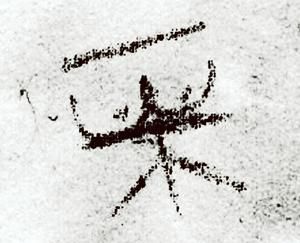Spirituality
Dark Anniversary in Wichita
Forty years ago, Dennis Rader became BTK and began his killing spree.
Posted January 15, 2014

Just after 8:00 AM on January 15, 1974, Dennis Rader stood in the cold and watched the white bungalow in an ordinary neighborhood in Wichita, Kansas. He thought of Julie Otero, the attractive brunette who lived there. He’d followed this “project” for weeks, had studied her every move until he knew her family’s routines.
He wanted to bind her with the rope he’d brought and describe to her what he was going to do. Then he would place his hands around her throat to snuff out her life. He expected that the world would one day know how dangerous he was, and nothing pleased him more. He’d studied other killers like Harvey Glatman, H. H. Holmes, and Jack the Ripper. He wanted his name on lists with theirs.
In the early 1970s, little was known about serial murder. Ted Bundy had just begun killing in the Pacific Northwest and the Son of Sam would not terrorize New York for another two years. During the decade before, Albert DeSalvo had confessed to being the Boston Strangler, and Life magazine had published a shocking spread about Charles Schmid, the “Pied Piper of Tucson.” The Zodiac had terrorized San Francisco and Juan Corona was arrested for killing two dozen migrant workers. In the spring of 1973, Ed Kemper had turned himself in as the Coed Killer of Santa Cruz just a few months before Elmer Wayne Henley showed Houston police where Dean Corll had buried 27 bodies.
The FBI had just begun offering a course that would eventually ground the work of the Behavioral Sciences Unit (now BAU), but no one was yet specifically focusing on serial killers. Rader’s education had come largely from detective magazines.
So, in January 1974, he entered the house and killed not just Julie Otero, his primary target, but also her daughter, son and husband, strangling them one by one, and molesting the girl. His first murder was an entire family, a bold move for a beginner. But he got away with it. At least, back then.
Over the next decade, Rader stalked and murdered six more women and tried to kill as many others, each time eluding the efforts of law enforcement (including the FBI) to stop him.
Finally, Rader re-emerged to play some cat-and-mouse with law enforcement, and he was caught in 2005, three decades after his first strike. He defied the expected “profile” of a serial killer. He was a fully-employed family man, church official, and Cub Scout leader.
He reflected few of the stereotypes. Contrary to the oft-repeated notion that serial killers cannot stop killing, Rader had done so. Contrary to the claim that they seek out similar victims, he varied his choices, his weapons, and his treatment of the victims. He even tried to deflect the FBI profile. Unlike the compulsions that drove Ted Bundy and Jeffrey Dahmer, Rader crafted his murders as “projects” that duplicated the style of elite killers from ages past. To keep control over how he'd be known, Rader offered the press the moniker they should use for him. Bind them, torture them, kill them – BTK.
The tragic mass murder of the Otero family forty years ago today launched a case of serial murder that terrorized Wichita for three decades and ultimately revealed a predator who killed while living as a spiritual leader and married father of two. In a plea deal, Rader received multiple life sentences. Currently, he’s serving them in a Kansas correctional facility.


